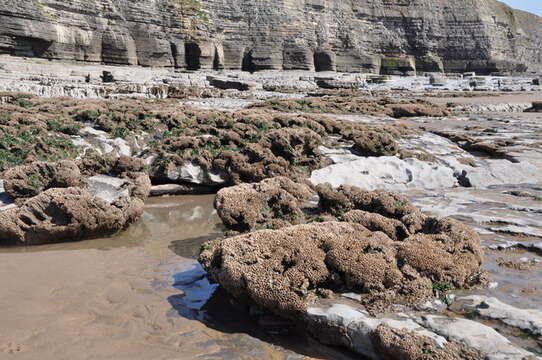Honeycomb Worm (Sabellaria alveolata) covered rocks at Dunraven Bay - geograph.org.uk - 1251286

Description:
Summary.mw-parser-output table.commons-file-information-table,.mw-parser-output.fileinfotpl-type-information{border:1px solid #a2a9b1;background-color:#f8f9fa;padding:5px;font-size:95%;border-spacing:2px;box-sizing:border-box;margin:0;width:100%}.mw-parser-output table.commons-file-information-table>tbody>tr,.mw-parser-output.fileinfotpl-type-information>tbody>tr{vertical-align:top}.mw-parser-output table.commons-file-information-table>tbody>tr>td,.mw-parser-output table.commons-file-information-table>tbody>tr>th,.mw-parser-output.fileinfotpl-type-information>tbody>tr>td,.mw-parser-output.fileinfotpl-type-information>tbody>tr>th{padding:4px}.mw-parser-output.fileinfo-paramfield{background:#ccf;text-align:right;padding-right:0.4em;width:15%;font-weight:bold}.mw-parser-output.commons-file-information-table+table.commons-file-information-table,.mw-parser-output.commons-file-information-table+div.commons-file-information-table>table{border-top:0;padding-top:0;margin-top:-8px}@media only screen and (max-width:719px){.mw-parser-output table.commons-file-information-table,.mw-parser-output.commons-file-information-table.fileinfotpl-type-information{border-spacing:0;padding:0;word-break:break-word;width:100%!important}.mw-parser-output.commons-file-information-table>tbody,.mw-parser-output.fileinfotpl-type-information>tbody{display:block}.mw-parser-output.commons-file-information-table>tbody>tr>td,.mw-parser-output.commons-file-information-table>tbody>tr>th,.mw-parser-output.fileinfotpl-type-information>tbody>tr>td,.mw-parser-output.fileinfotpl-type-information>tbody>tr>th{padding:0.2em 0.4em;text-align:left;text-align:start}.mw-parser-output.commons-file-information-table>tbody>tr,.mw-parser-output.fileinfotpl-type-information>tbody>tr{display:flex;flex-direction:column}.mw-parser-output.commons-file-information-table+table.commons-file-information-table,.mw-parser-output.commons-file-information-table+div.commons-file-information-table>table{margin-top:-1px}.mw-parser-output.fileinfo-paramfield{box-sizing:border-box;flex:1 0 100%;width:100%}} Description: English: Honeycomb Worm (Sabellaria alveolata) covered rocks at Dunraven Bay Appearing to my uneducated eye to be dead and dying barnacles these clumps are in fact colonies of Honeycomb Worms. The worms form a tube of sand around themselves in which to live, which accounts for their soft and crumbly form. Colonies often grow to form large reefs up to several metres across and a metre deep. I am grateful to Nigel Davies for steering me toward a correct identification. Date: 12 April 2009. Source: From geograph.org.uk. Author: Mick Lobb. Attribution(required by the license)InfoFieldMick Lobb / Honeycomb Worm (Sabellaria alveolata) covered rocks at Dunraven Bay / CC BY-SA 2.0. InfoFieldMick Lobb / Honeycomb Worm (Sabellaria alveolata) covered rocks at Dunraven Bay. Camera location51° 26′ 58″ N, 3° 36′ 53″ W View all coordinates using: OpenStreetMap 51.449580; -3.614800. Object location51° 26′ 58″ N, 3° 36′ 51″ W View all coordinates using: OpenStreetMap 51.449310; -3.614200.
Included On The Following Pages:
- Life (creatures)
- Cellular (cellular organisms)
- Eukaryota (eukaryotes)
- Opisthokonta (opisthokonts)
- Metazoa (Animal)
- Bilateria
- Protostomia (protostomes)
- Spiralia (spiralians)
- Annelida (segmented worms)
- Pleistoannelida
- Sedentaria
- Sabellariidae
- Sabellaria
- Sabellaria alveolata (honeycomb worm)
This image is not featured in any collections.
Source Information
- license
- cc-by-sa-3.0
- copyright
- Mick Lobb
- creator
- Mick Lobb
- source
- From geograph.org.uk
- original
- original media file
- visit source
- partner site
- Wikimedia Commons
- ID


